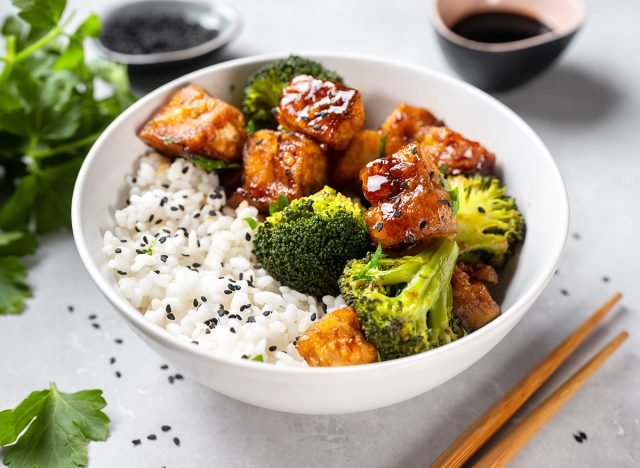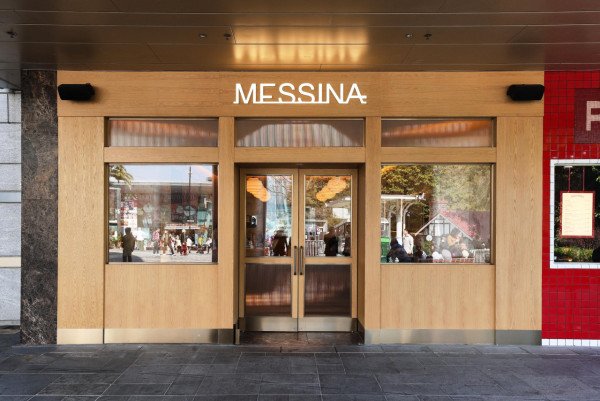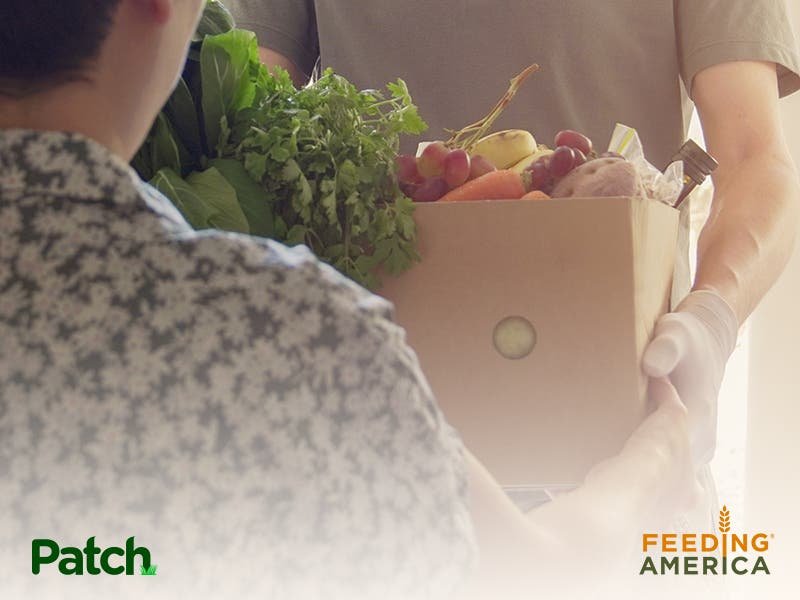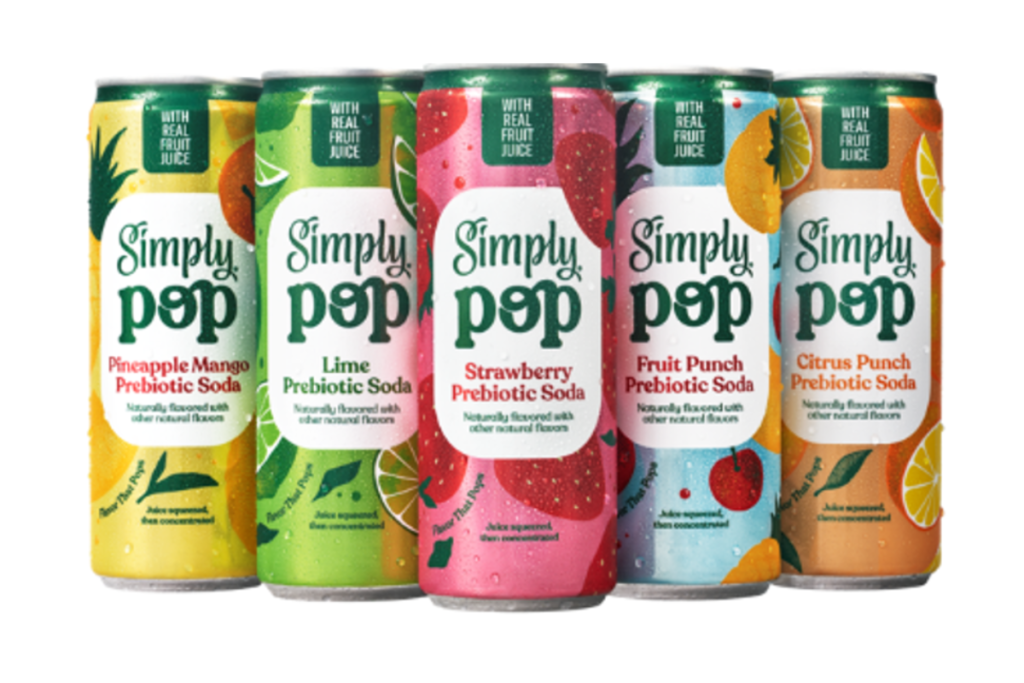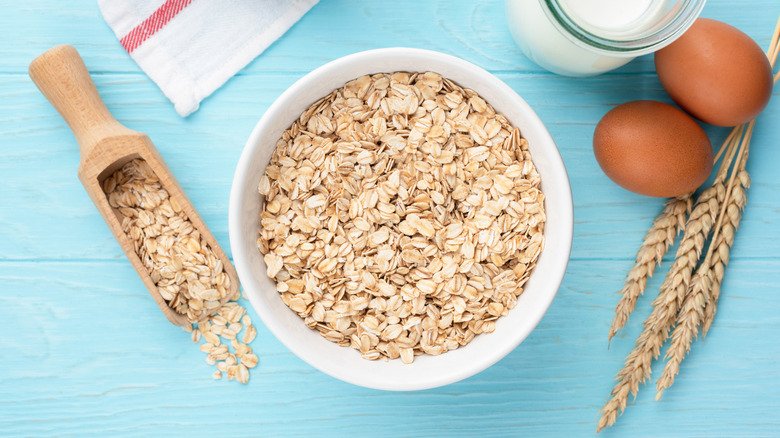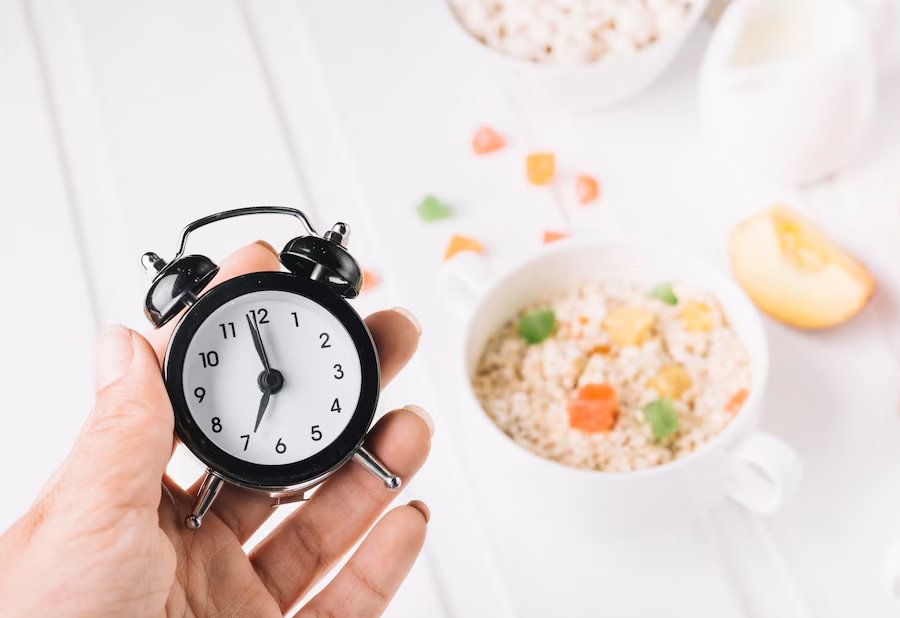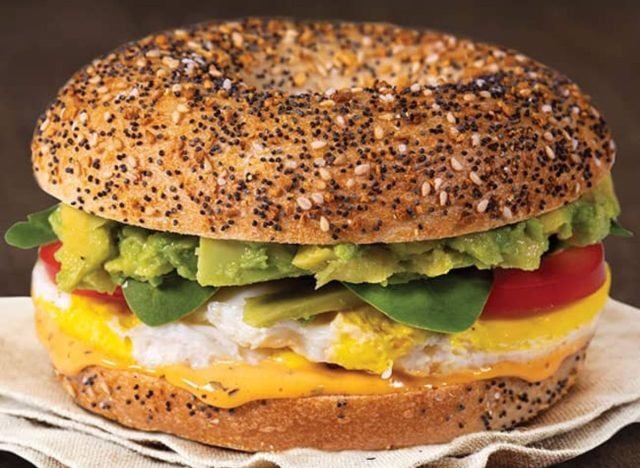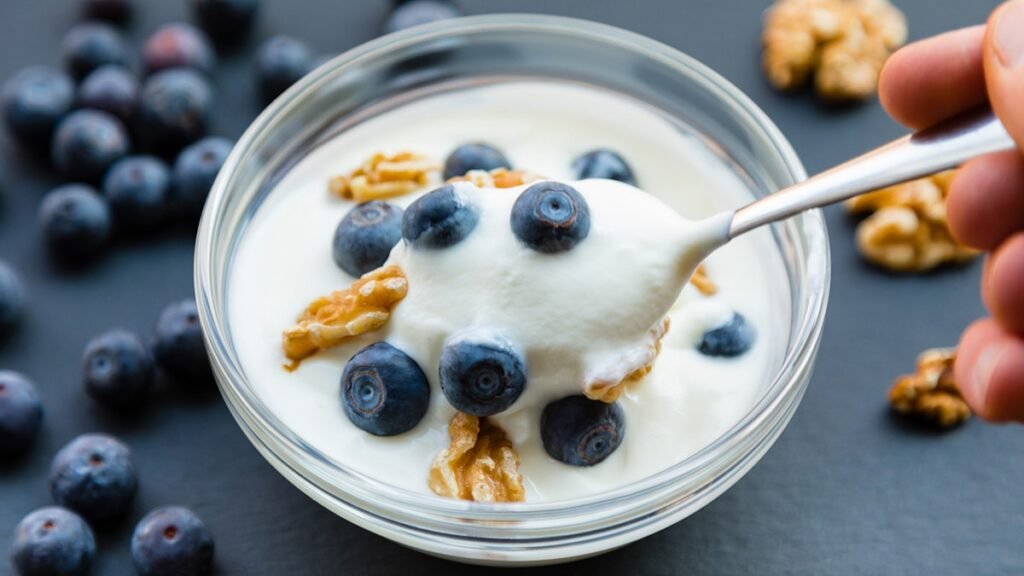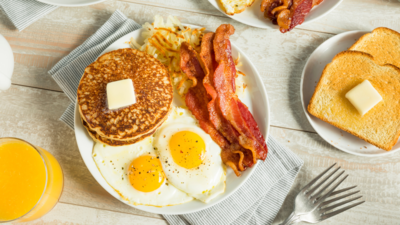Diabetes is a serious condition that affects over 38 million Americans, according to the Centers for Disease Control and Prevention. When not managed, major health problems like heart disease, blindness, kidney failure, and more can happen. Currently, diabetes is the ninth leading cause of death, per the World Health Organization and there are four main types: Type 1 diabetes, Type 2 diabetes, gestational diabetes (diabetes while pregnant), and pre-diabetes, in which you have higher-than-normal blood glucose levels but not quite high enough to qualify as Type 2 diabetes.
For those with type 1 diabetes, the body stops producing insulin because the immune system mistakenly attacks and destroys its healthy insulin-producing cells in the pancreas,” Dr. Camillo Ricordi, Director of the Diabetes Research Institute and the Cell Transplant Program, tells us.
Dr. Ricordi further explains, “For those with type 2 diabetes, the pancreas produces insulin, but the body becomes resistant to it. Initially, insulin production actually increases in an attempt to compensate for its insufficient effect, but eventually, the insulin-producing cells become exhausted and insulin production decreases, often requiring insulin treatment also in the late stages of type 2 diabetes. Unlike type 1 diabetes, many cases of type 2 diabetes could be prevented by diet and physical activity.”
Diabetes is a health issue that can cause major complications. Dr. Ricordi says, “If left untreated, and often also following insulin treatment, type 1 diabetes can damage eyes, kidneys, nerves, and the heart, and can also lead to coma and death. So, at this time, type 1 diabetes must be treated through a daily regimen of insulin therapy, or by transplantation of insulin-producing cells, either as a pancreas transplant or as a cellular therapy (pancreatic islet transplantation).” Diet plays a big factor with diabetes, and many foods can spike your blood sugar. Knowing which foods to limit is key to staying healthy and helping manage diabetes. Here are 15 breakfast foods that spike your blood sugar.
Why It’s Dangerous For Your Blood Sugar to Spike
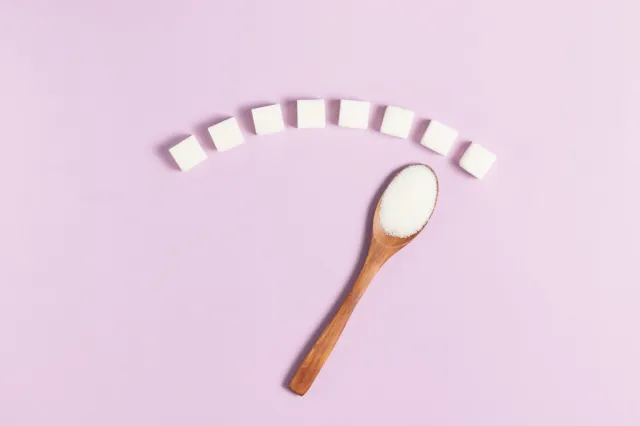

A spike in blood sugar can lead to major problems like heart disease, kidney issues and nerve damage. Maddison Saalinger, MS, RD, LDN, is a registered and licensed dietitian at the Diabetes Research Institute, University of Miami, Miller School of Medicine, explains why.
“There are many factors that can cause sugar to spike, such as diet, stress, sleep, high-intensity exercise and medications. It is normal to have a temporary sugar spike. Typically, blood sugar will rise, and shortly after, it will come back down to a normal range.”
She adds, “However, having long periods of high blood sugar over time can cause damage to the kidneys, nerve endings, eyesight and heart. People with either type 1, type 2 diabetes or pre-diabetes have a harder time regulating blood sugar levels either due to the body’s inability to produce insulin or having insulin resistance (note: insulin is the hormone that allows sugar in the blood to enter the cells).”
How Certain Foods Cause Blood Sugar to Spike
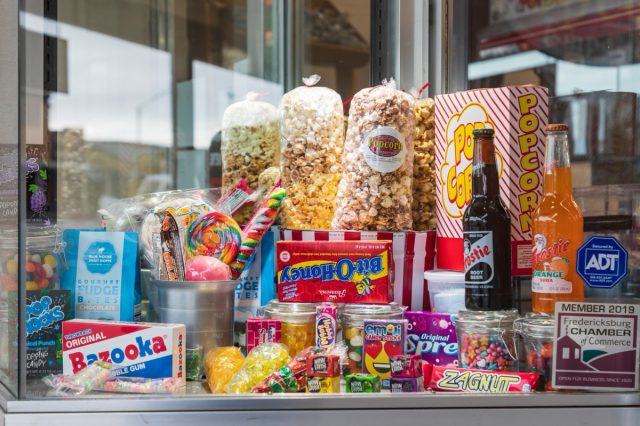

There are many foods that are challenging for diabetics to consume, especially in large portions.
Saalinger tells us, “There are three main macronutrients: carbohydrates, proteins and fats. Carbohydrates can be responsible for causing blood sugar to spike, while protein and fat have little or no effect. Simple carbohydrates typically raise blood sugar quicker and higher, while complex carbohydrates typically raise blood sugar slower and more moderately. Simple carbohydrates are items like juices, sodas, candies, desserts, refined grains like white bread, some cereals and crackers, and fruits.”
She adds, “Complex carbohydrates are items like whole grains, vegetables, beans and legumes. The main difference between these two groups is fiber content. Fiber is what helps carbohydrates to be digested slower and slows down a blood sugar spike. Types of carbohydrates and quantity of carbohydrates are important to control blood sugar spikes. Having a diet high in simple carbohydrates can cause blood sugar to spike.”
Bagels
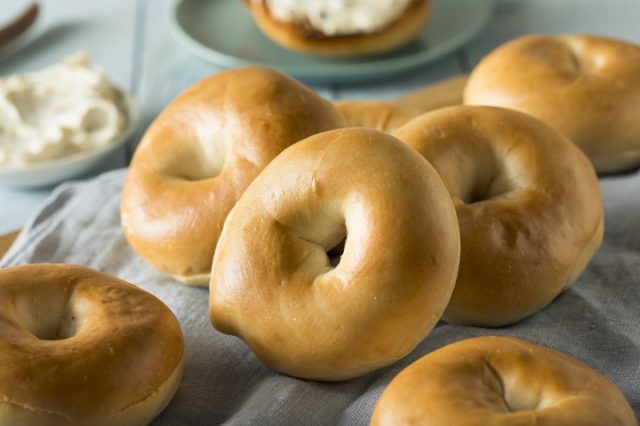

Nutrition: Per serving: 1 plain bagel
Calories: 277
Fat: 1.4 g (Saturated fat: 0.4 g)
Sodium: 443 mg
Carbs: 55 g (Fiber: 1.7 g, Sugar: 8.9 g)
Protein: 11 g
Bagels are an easy go-to in the mornings but can give a serious sugar rush.
“That sugar rush is also known as a spike in your blood sugar levels,” says Kimberly Jackson, MPA, RD, LD, Registered Dietitian.
She explains, “Many bagels have more than 40 grams of carbohydrates and little to no fiber. This means there will be high amounts of glucose in the bloodstream and the extra glucose then raises the blood sugar.”
Pancakes with Syrup
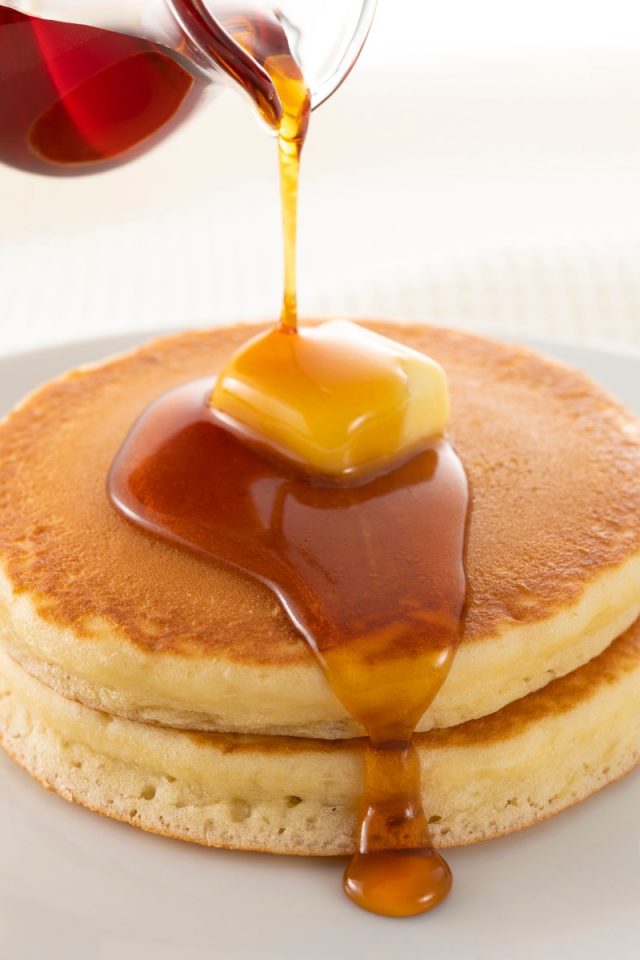

Nutrition: Per serving: 2 pancakes with butter and syrup
Calories: 277
Fat: 14 g (Saturated fat: 5.9 g)
Sodium: 1,104 mg
Carbs: 91 g (Fiber: 1.7 g, Sugar: 8.9 g)
Protein: 8 g
Pancakes are a morning staple, especially for weekend brunch, but an order of hotcakes can send your blood sugar soaring.
Jackson says, “Pancakes are traditionally made with white flour. White flour has minimal fiber or protein. Then, if you smear pancake syrup on top of the pancakes, two tablespoons of syrup, add at least 24 additional grams of carbohydrates. This meal will surely cause your glucose levels to rise quickly and result in a spike to your blood sugar.”
While it’s hard to eat griddle favorites without syrup, it can be a risk.
“Syrup is packed with sugar that quickly gets absorbed into the bloodstream,” Sarah Nash, MS, RD, LDN, explains. “Pancakes and waffles are typically made with refined grains like bleached white flour, which also break down rapidly into glucose. Together, they create a high-glycemic-index meal that triggers a fast and significant spike in blood sugar levels.”
RELATED: What Eating Too Much Sugar Does to Your Body
Coffee
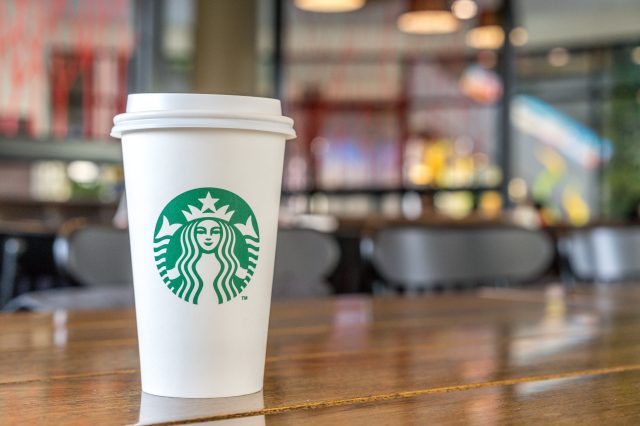

Nutrition: Per serving: Caffè Latte 16 oz Starbucks
Calories: 190
Fat: 7 g (Saturated fat: 4.5 g)
Sodium: 170 mg
Carbs: 19 g (Fiber: 0 g, Sugar: 18 g)
Protein: 13 g
Coffee is the ultimate morning routine, but load it up with creamer and sugary flavors, and then it becomes a blood sugar rollercoaster!
Jackson says, “Your favorite coffeehouse latte can come with a lot of sugar (as much as 75 grams sugar)! All of the extra sugar that your body doesn’t need quickly turns into glucose, sending your blood sugar levels through the roof!”
So, if you enjoy a fancy coffee drink packed with sugar, think twice next time before ordering.
“These are sneaky, high-sugar drinks that are super popular in the morning,” says Amy Beney, MS RD CDCES. “Drinks made with sugar can cause a spike in blood sugar. Often, people don’t realize how much sugar is in some of these beverages. They are also more readily absorbed in a liquid form.”
Waffles
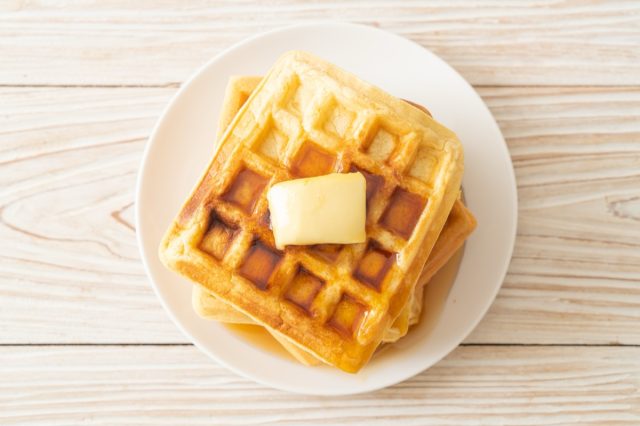

Nutrition: Per serving: 1 7in waffle
Calories: 218
Fat: 11 g (Saturated fat: 2.1 g)
Sodium: 383 mg
Carbs: 25 g
Protein: 5.9 g
Their crispy exterior with square-like pockets and soft inside make waffles ideal for toppings such as fruit, syrup and whipped cream, but beware. This breakfast treat is a surefire way to raise your blood sugar.
“Waffles are high-carb foods and carbs are the macronutrients that have the largest effect on our blood sugar levels,” Linda S. Nikolakopoulos, MS, RD, LDN, CDCES, Registered Dietitian/Licensed Nutritionist says. “In addition, maple syrup tends to go hand in hand with these foods. Adding maple syrup is quite literally adding sugar to an already high-carb meal.”
Fruit Smoothies
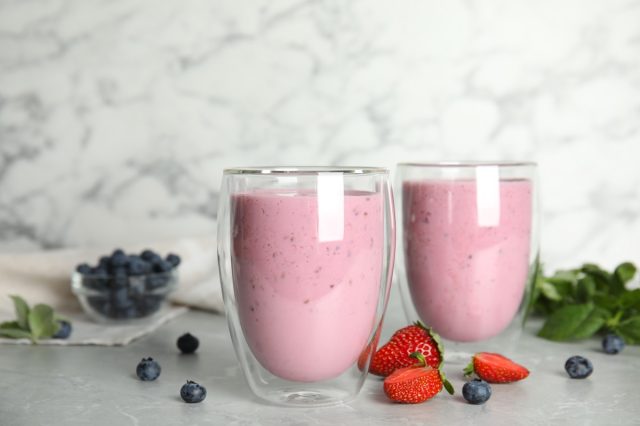

Nutrition: Per serving: 1 cup 202 g
Calories: 161
Fat: 1.7 g (Saturated fat: 0.9 g)
Sodium: 59 mg
Carbs: 34 g (Fiber: 2.8 g, Sugar: 24 g)
Protein: 5.5 g
Many turn to fruit smoothies as a way to boost their protein intake and other vitamins, but they can be harmful for diabetics.
“While fruit smoothies tend to be a powerhouse of nutrients, they can also, sadly, cause blood sugars to skyrocket,” Nikolakopoulos explains. “In addition to fruit’s wonderful array of vitamins and antioxidants, they also contain naturally occurring sugars. These sugars are what provide their sweet taste, however, they also raise blood sugar levels.
She adds, “In order to reap the health benefits fruit has to offer, but also prevent blood sugar spikes, be sure to include protein, fiber, and healthy fats into the smoothie.”
Pastries
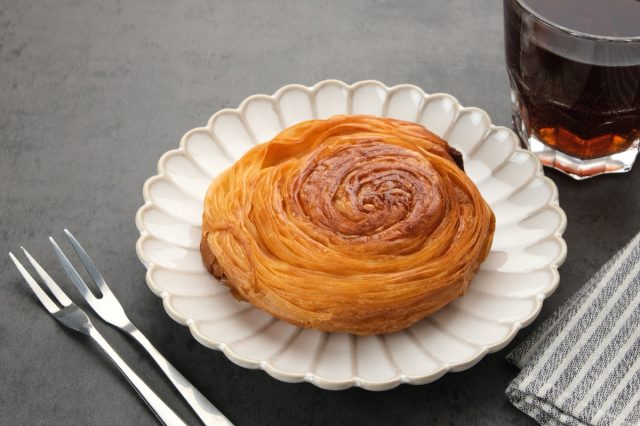

Nutrition: Per serving: 1 plain danish
Calories: 278
Fat: 16.3 g (Saturated fat: 4.6 g)
Sodium: 284 mg
Carbs: 28 g (Fiber: 2.8 g, Sugar: 24 g)
Protein: 5.0 g
Pastries provide a quick and sweet satisfaction, but they’re not good for your blood sugar, even plain ones without a fruit filling.
“Pastries are a high carbohydrate food that often contains saturated fats,” Beney says. “Foods high in carbohydrates can cause a spike in blood sugar.”
French Toast
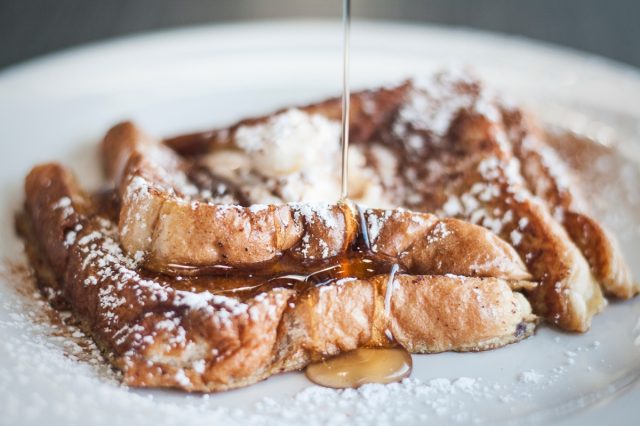

Nutrition: Per serving: 1 slice without syrup
Calories: 219
Fat: 11 g (Saturated fat: 5.2 g)
Sodium: 237 mg
Carbs: 23 g (Fiber: 1.1 g, Sugar: 4 g)
Protein: 7.3 g
French toast is a simple yet comforting food that’s tasty but worrisome for blood sugar.
“French toast is often made with toast as a base,” Beney explains. “The bread is often mixed with a variety of ingredients, often times sugar to create a delightful crispy crust. When topped with breakfast syrup or fruit can cause a spike and blood sugar.”
Crêpes
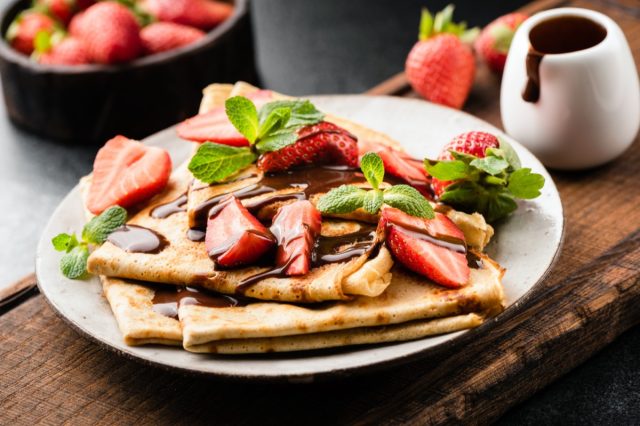

Nutrition: Per serving: 1 crêpe 187 g
Calories: 182
Fat: 6.1 g (Saturated fat: 3.2 g)
Sodium: 139 mg
Carbs: 27 g (Fiber: 2.6 g, Sugar: 12 g)
Protein: 6.1 g
Crêpes are a beloved breakfast favorite because of their versatility and wide-ranging fillings. Some enjoy a savory crêpe, while others load them with sugary sweetness and that’s where the trouble can happen.6254a4d1642c605c54bf1cab17d50f1e
“A high carbohydrate food often topped with sweetened fruit, which can cause a spike and blood sugar,” says Beney.
RELATED: 7 Warning Signs You’re Eating Too Much Sugar
Processed High-Carbohydrate Breakfast Cereals
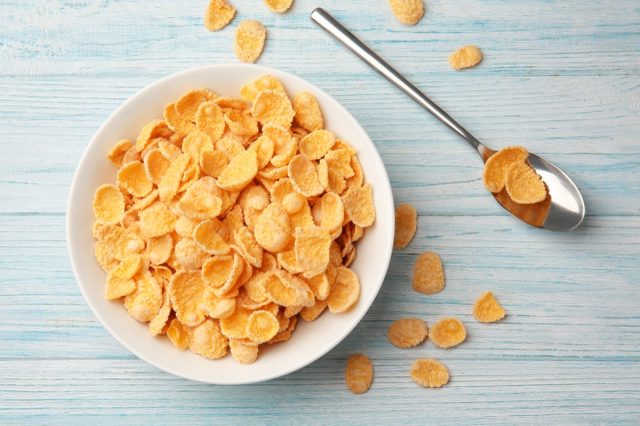

Nutrition: Per serving: 1 ½ cup of Corn Flakes
Calories: 150 without milk
Fat: 0 g (Saturated fat: 0 g)
Sodium: 300 mg
Carbs: 36 g (Fiber: 1 g, Sugar: 4 g)
Protein: 3.0 g
Sugary cereals can be nostalgic and a quick breakfast, but they’re not healthy for anyone, but especially diabetics.
“When people think of cereals that rapidly raise blood sugar, they usually think of the sugar-filled very sweet ones that most of us grew up eating,” explains Seema Shah, MPH,MS,RD,IFNCP, WIMI-CP, Dietitian Health Coach/Writer at Seema Shah Integrative and Functional Nutrition.
Shah says, “However, plain cereals that are not that sweet can spike blood sugar too, because of their large amount of quick-burning carbs. This can leave you feeling hungry and tired only a couple of hours after consuming it.”
She adds, “Furthermore, most of these cereals don’t contain enough protein or fiber to fill you up, and to stabilize blood sugar levels by helping to slow down the fast digestion of the processed carbs.”
But there’s another reason cereals cause a spike.
Nas says, “Many popular cereals are made from refined grains and are sweetened heavily with added sugars. Since they lack fiber and protein to slow down digestion, these cereals break down quickly, causing a rapid rise in blood sugar.”
Flavored Yogurts
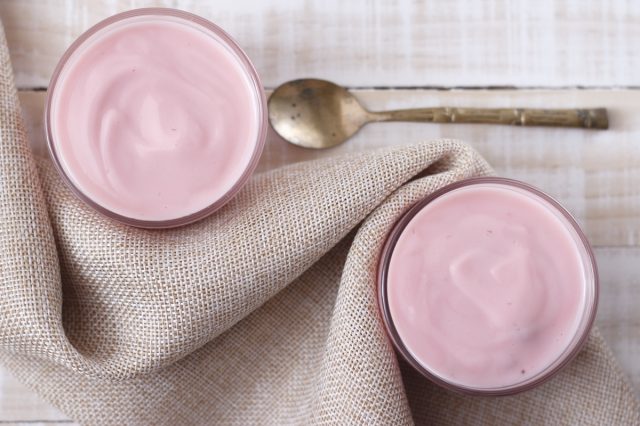

Nutrition: Per serving: 1 6 oz fruit yogurt
Calories: 162
Fat: 0.3 g (Saturated fat: 0.2 g)
Sodium: 99 mg
Carbs: 32 g (Fiber: 0 g, Sugar: 32 g)
Protein: 7.5 g
Yogurt is often thought of as a healthy breakfast option, but not if you choose the wrong one.
Shah says, “Some types of flavored yogurts can contain more grams of sugar than a soda. Also, they usually do not have enough protein or healthy fats to help slow the rise of blood sugar.”
She explains, “These sugars surge into our bloodstream, leading to a steep blood sugar spike. It’s often followed a few hours later by a rapid blood sugar crash too. It’s best to have plain, high-protein Greek yogurt for breakfast and to add chopped fruit or berries for some high-fiber sweetness.”
White Bread
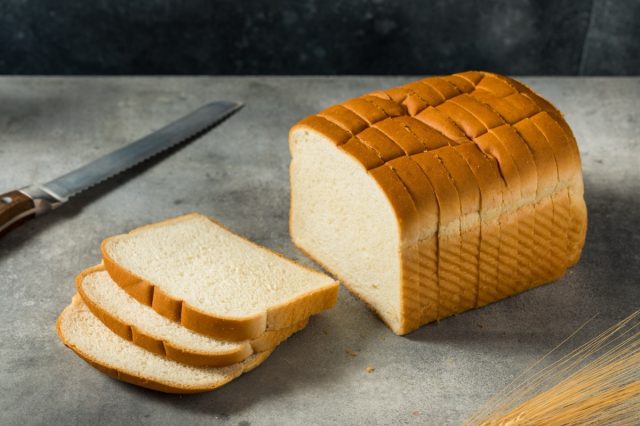

Nutrition: Per serving: 1 slice
Calories: 98
Fat: 1.2 g (Saturated fat: 0.3 g)
Sodium: 1800 mg
Carbs: 18 g (Fiber: 1 g, Sugar: 2.1 g)
Protein: 3.3 g
If you love white bread for toast in the mornings, you could be causing a major spike in your blood sugar.
Saalinger says, “White bread is considered to be simple carbohydrates.”
White bread has little fiber because it’s more processed than whole-grain bread.
“White bread is carbohydrate-dense and can easily go over the recommended portion size,” Saalinger explains. “For this reason, these foods can cause blood sugar to spike.”
While you don’t have to avoid white bread completely, Saalinger does recommend portion control and choosing whole-grain bread when possible.
Fast Food
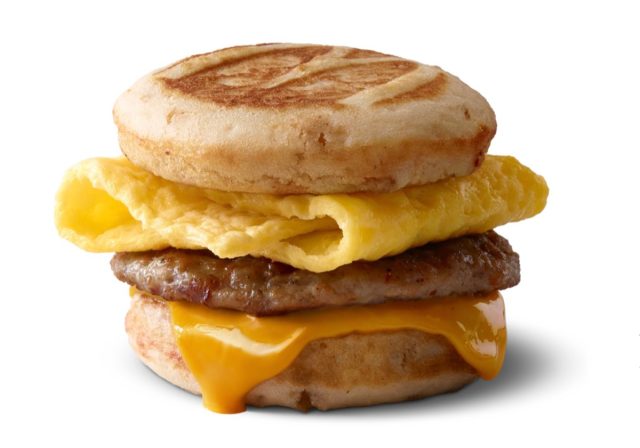

Nutrition: Per serving: 1 McDonald’s Sausage, Egg, and Cheese McGriddle
Calories: 550
Fat: 33 g (Saturated fat: 13 g)
Sodium: 1,290 mg
Carbs: 44 g (Fiber: 2 g, Sugar: 15 g)
Protein: 19 g
Hitting the drive-thru on your way to work is a convenient way to get breakfast, but it’s a terrible option, according to Saalinger.
“Fast foods tend to be highly processed and typically made with refined (simple) carbohydrates, making them low in fiber,” she explains.
Saalinger says, “These types of food are digested quickly, which causes a spike in blood sugar. Fast food is something to eat seldomly. Diets that contain a lot of refined carbohydrates and sugars that are found in fast food aren’t helpful to glucose management.”
She explains, “In addition, these foods typically are calorie-dense and have little nutritional value, which can sometimes lead to other complications like obesity, high blood pressure, heart disease and more.”
If you want fast food, Saalinger advises ordering protein, such as omelets with veggies.
Sweetened Flavored Oatmeal
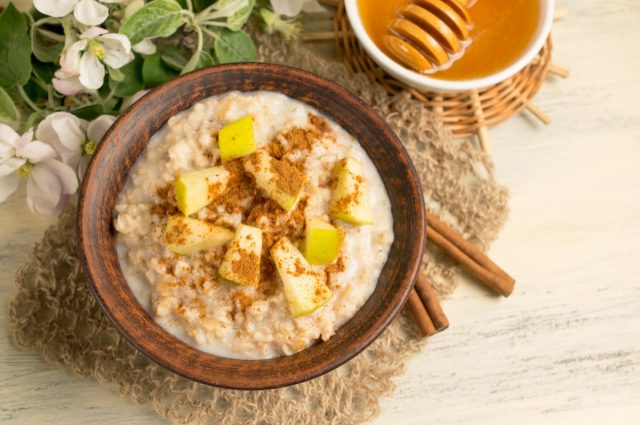

Nutrition: Per serving: 1 packet of apple and cinnamon oatmeal
Calories: 157
Fat: 2 g (Saturated fat: 0.04 g)
Sodium: 196 mg
Carbs: 33 g (Fiber: 3.6 g, Sugar: 12 g)
Protein: 3.7 g
Plain oatmeal can taste bland, but it’s the healthier choice that won’t spike your blood sugar.
According to Ali Chappell, PhD, MS, RD, Founder of Lilli Health, “Sweetened flavored oatmeal has added sugars and high starch content can cause a rapid spike in blood sugar levels.” She says, “Instant and quick oats are highly processed, making their starch break down faster into glucose, while flavored varieties often contain added sugars and syrups, further worsening blood glucose and insulin spikes.”
Granola
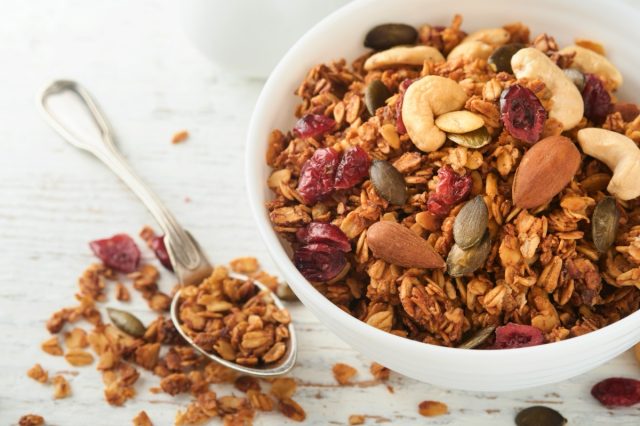

Nutrition: Per serving: ½ cup of granola
Calories: 298
Fat: 15 g (Saturated fat: 2.4 g)
Sodium: 16 mg
Carbs: 33 g (Fiber: 5.4 g, Sugar: 12 g)
Protein: 8.3 g
Another seemingly healthy breakfast is granola, but Chappell explains how it affects your blood sugar.
“Granola is primarily made of processed oats mixed with added sugars and oils, making it a high-starch, high-sugar food that can rapidly spike blood sugar and insulin levels.” She says, “While oats contain fiber, the processing involved in making granola breaks them down more quickly, reducing their ability to slow digestion. Many store-bought varieties also include honey, syrups, or sweetened dried fruit, further increasing the sugar load.”
RELATED: 9 ‘Healthy’ Foods With Way More Sugar Than You Think
Açaí Bowls
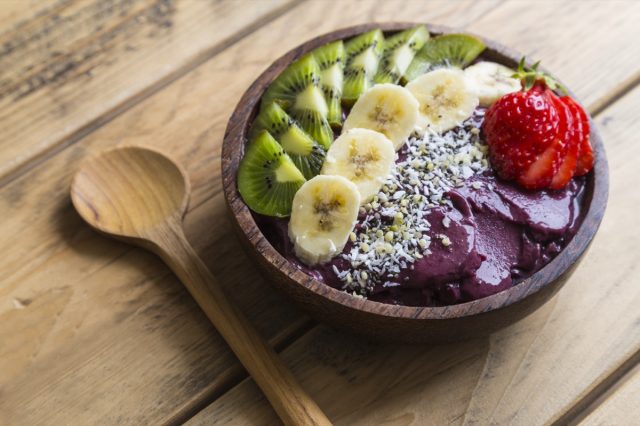

Nutrition: Per serving:1 bowl
Calories: 553
Fat: 24 g (Saturated fat: 6.1 g)
Sodium: 16 mg
Carbs: 23 g (Fiber: 17 g, Sugar: 50 g)
Protein: 8.3 g
Açaí bowls are a delicious and refreshing morning meal, but they’re not great for your blood sugar.
Chappell says, “Açaí bowls may seem like a nutrient-packed breakfast, but they often contain large amounts of sugar from sugar-sweetened açaí, fruit juice, syrups, granola, and other sweet toppings.”
She adds, “While açaí itself is a nutritious berry, most commercial açaí purées come pre-sweetened, turning them into a blood sugar and insulin bomb.”



